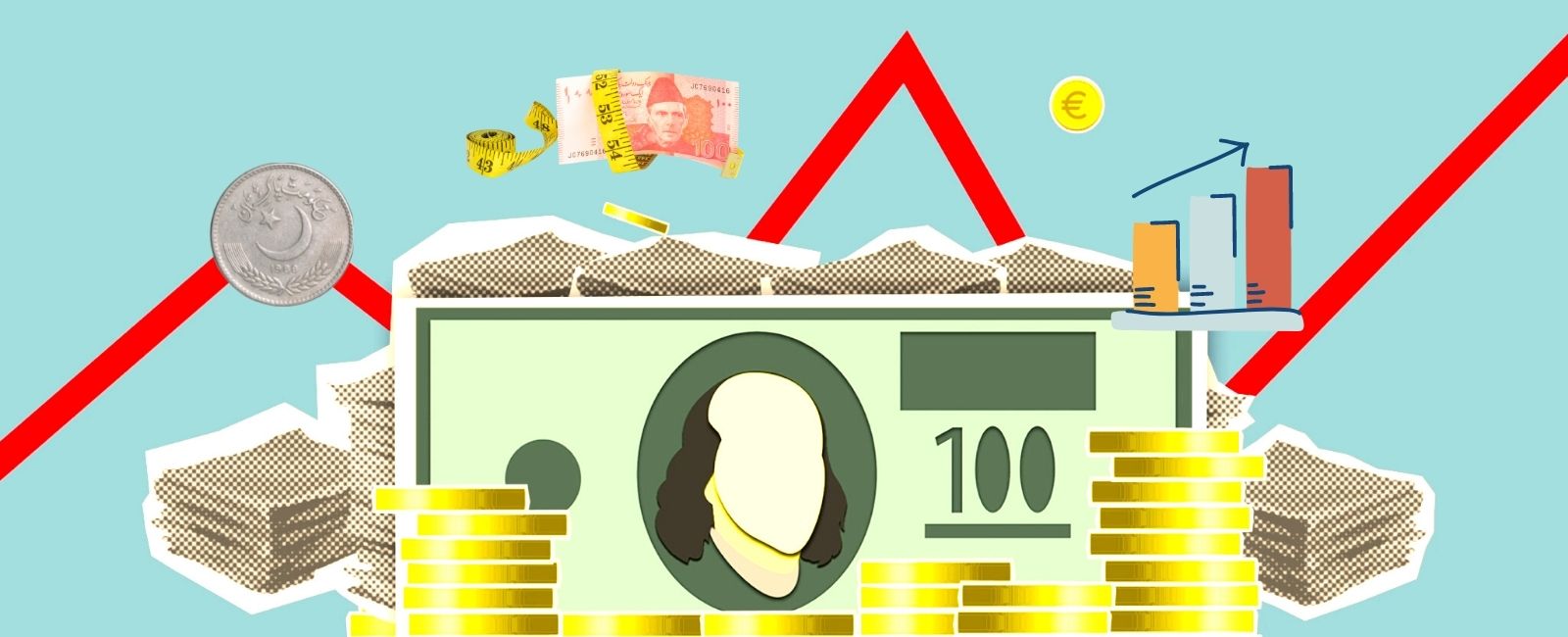A tale of two halves: 2021 marked a 'challenging' year for PSX
Analysts predict KSE-100 index will generate an overall return of 25% in 2022 on the back of sustainable economic growth

KARACHI: The Pakistan Stock Exchange (PSX) — a benchmark for market performance — proved to be a lost battleground in 2021.
The benchmark index, which began the year with 44,434.80 points was trading at 44,596.07 by Friday (the last day of the calendar year).
With a slight increase of 0.40% on the last day of the year, the PSX benchmark KSE-100 index improved by a net 1.9% during the year and closed at 44,596.07 points today. However, the market had fared extremely well in the prior two years — in 2019 and 2020.
A deterioration in macroeconomic indicators, which worsened due to uncertainty about the economic policy of the new government, confusion on whether Pakistan was going to the International Monetary Fund (IMF), and lack of clarity on how the government plans to fix the beleaguered economy, weighed on the market.
Terming 2021, as a “tale of two halves”, Pakistan-Kuwait Investment Company Head of Research Samiullah Tariq told Geo.tv that the outgoing year was the year of reopening, whereby significant optimism was witnessed in the initial part of the year.
“The market also reflected this optimism and exceeded the 48,000-point barrier in June 2021. However, following the opening up of the global economies, commodity prices surged due to pent-up demand, and the country faced challenges of inflation and trade deficit,” he said.
“The market also responded and didn’t perform well in the second half of the year,” he added.
Endorsing his view, BMA Capital Management Executive Director Saad Hashemy said: “Sentiments in the stock market and expectations for the economy remained bullish during the first six months of 2021.”
The analyst said the easing of COVID-19 restrictions globally, coupled with continued global supply disruptions, led to an increase in commodity prices, where international oil prices peaked at over $80 per barrel (West Texas Intermediate) in November 2021 from around $50 per barrel in January 2021.
“Higher international commodity prices led to a widening external account deficit, runaway inflation, and retracement of local equity valuations in line with double-digit interest rates,” he explained.
Despite the volatile conditions, activity gained traction with record-high average volumes witnessed in 2021 at 474 million shares compared to 330 million last year alongside the highest-ever average value traded at Rs16.9 billion compared to Rs12.3 billion in 2020.
The Morgan Stanley Capital International (MSCI) decision to notch down PSX among lesser advanced economies into Frontier Markets (FM) index from the Emerging Market (EM) index also pushed foreign investors to pull out of the market.
According to Arif Habib Limited, 2021 was a "challenging year" as pressure was led by the external account, rupee depreciation, rising inflation, recurring waves of COVID-19, delay in the approval of the IMF programme, and transition from MSCI EM to FM.
The brokerage house highlighted that sectors leading the contribution chart during the outgoing year include technology and communication (1,003 points) amid re-rating and foreign interest, followed by commercial banks (921 points) which posted robust profits despite low-interest rates in most part of the year.
On the flip side, sectors eroding market gains in 2021 included cement (373 points) given multi-year high coal prices raising concerns over the outlook of margins, and oil and gas marketing companies due to rising gas circular debt (347 points).
During the outgoing year, the stock market announced the formal launch of the much-awaited trading and surveillance platform, called Designated Time Schedule (DTS), and increased the duration of daily share trading by 30 minutes; however, due to technical problems experienced in the Jade Trading Terminal (JTT) and the reluctance of market players, the bourse reverted to the old trading system (KATS).
In May, the stock exchange made history as trading volumes shot to an all-time high of two billion shares.
The stock market witnessed a total of eight initial public offerings (IPOs) — six on the mainboard and two on the Growth Enterprise Market (GEM) board. The total amount raised by the IPOs was around Rs20 billion.
Nonetheless, overall the performance of the market remained subdued.
2022: Rise of the PSX?
Stock market analysts predict the benchmark KSE-100 index will generate an overall return of 25% in 2022 on the back of sustainable economic growth.
“We expect the local bourse to reach 55,000 points by December 2022,” Arif Habib Limited (AHL) CEO Shahid Ali Habib said at the launch of ‘Pakistan Strategy 2022 — A Delicate Balance’.
“Our index target is based on target price mapping, justified P/E (Price-to-Earnings) multiples and earnings growth. Our forward P/E for CY22 comes out to 4.9x which is lower than the last ten-year P/E of 8.3x, while earnings growth is expected to clock in at 12.4%.”
Analysts also expect the Pakistani stock market to regain its previous status of best performing market, which it had achieved in 2016-17, and give higher returns next year.
Hashemy added that the stock market direction in 2022 will be dependent on: direction of international commodity prices, complete contours of the IMF programme and implementation of the necessary set of monetary and fiscal measures.
Furthermore, the bourse is expected to welcome eight new companies and list their shares for trading in the next year. These companies are estimated to raise equity capital worth around Rs14-15 billion through IPOs in 2022.
“The bourse may see the single largest IPO from the construction industry in the private sector if the stock market performs well in line with the expectations,” Habib said.
According to AHL Head of Research Tahir Abbas and Economist Sana Tawfik, the stock market is expected to perform well during 2022 following stabilisation of macroeconomic indicators such as inflation and current account deficit from February 2022 onward.
The brokerage house picked exploration and production, banks, cement, steel, oil marketing companies, textiles and auto as the sectors which will remain in the limelight during 2022.
With regard to the exploration and production sector, the research house predicted the resolution of the gas circular debt and stability in international oil prices. Moreover, it said that the depreciation of the rupee against the US dollar would keep this sector in the limelight.
In the banking sector, it projected significant growth in deposits citing rising interest rates which would keep the sector’s earnings upbeat.
AHL said that the cement sector would witness pricing discipline coupled with growth in domestic dispatches, a reversal in international coal prices, and that higher public sector development programme (PSDP) allocation should stimulate the bottom-line of cement companies.
In the steel sector, it is said that significant pricing power, strong recovery in demand with no threat from imports and inventory gains will escalate earnings.
In the textile segment, it projected continuous growth in export orders amid government incentives for export-oriented sectors and expected margins to remain upbeat.
And for automobiles, it projected that strong pricing power, higher duties on CBU (completely built-up) units and robust demand amid economic growth would augment automobile sales.




